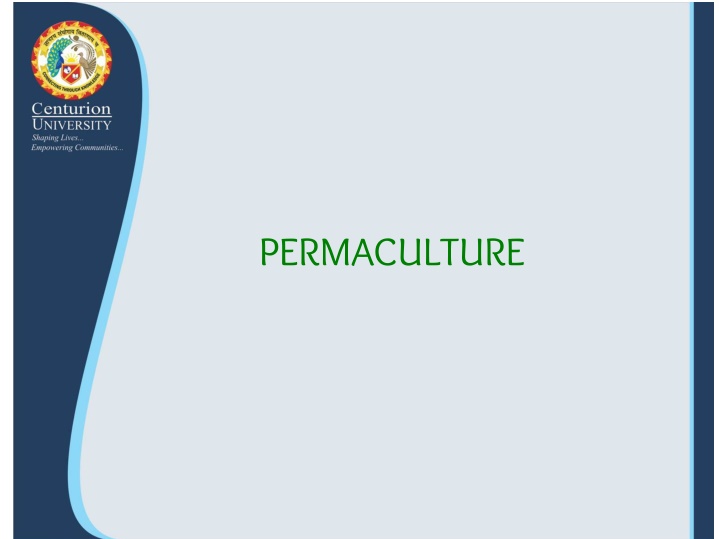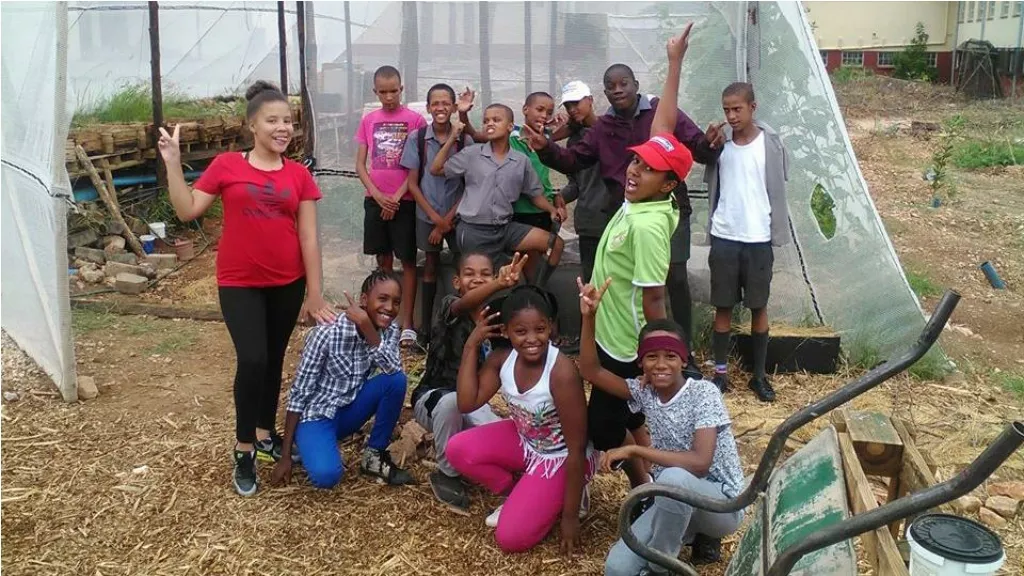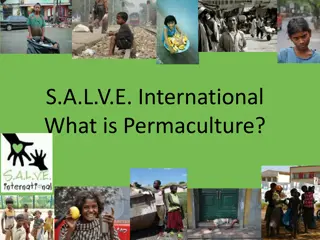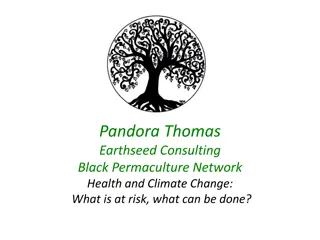
Permaculture Principles and Practices
Learn about the origin and principles of permaculture, a sustainable design system centered on mimicking natural ecosystems. Discover how permaculture focuses on caring for the earth, people, and returning surplus while utilizing renewable resources and minimizing waste. Explore key concepts such as observing nature, capturing energy, obtaining yields, and designing with patterns in mind. Dive into the world of permaculture to create harmonious and regenerative systems for a sustainable future.
Uploaded on | 0 Views
Download Presentation

Please find below an Image/Link to download the presentation.
The content on the website is provided AS IS for your information and personal use only. It may not be sold, licensed, or shared on other websites without obtaining consent from the author. If you encounter any issues during the download, it is possible that the publisher has removed the file from their server.
You are allowed to download the files provided on this website for personal or commercial use, subject to the condition that they are used lawfully. All files are the property of their respective owners.
The content on the website is provided AS IS for your information and personal use only. It may not be sold, licensed, or shared on other websites without obtaining consent from the author.
E N D
Presentation Transcript
In 1929, Joseph Russell Smith took up an antecedent term as the subtitle for Tree Crops: A Permanent Agriculture, a book in which he summed up his long experience experimenting with fruits and nuts as crops for human food and animal feed.[5] In the late 1960s, Bill Holmgren started developing ideas about stable agricultural systems on the southern Australian island state of Tasmania. This was a result of the danger of the rapidly growing use of industrial- agricultural methods. Permaculture was developed, and the term coined by Bill Mollison and David Holmgren in 1978. Permaculture is a system of agricultural and social design principles centred on simulating or directly utilizing the patterns and features observed in natural ecosystem. Mollison and David
A design approach called Permaculture was their response and was first made public with the publication of their book Permaculture One in 1978. Mollison has said: "Permaculture is a philosophy of working with, rather than against nature; of protracted and thoughtful observation protracted and thoughtless labour; and of looking at plants and animals in all their functions, rather than treating any area as a single product system. rather than
The three core issues of permaculture are: Care for the earth: Provision for all life systems to continue and multiply. This is the first principle, because without a healthy earth, humans cannot flourish. Care for the people: Provision for people to access those resources existence. Return of surplus: Reinvesting surpluses back into the system to provide for the first two ethics. This includes returning waste back into the system to recycle into usefulness. necessary for their
David Principles and Pathways Beyond Sustainability in which he suggested twelve Permaculture designs. Holmgren wrote a book, Permaculture: 1. Observe and interact: By taking time to engage with nature we can design solutions that suit our particular situation. 2. Catch and store energy: By developing systems that collect resources at peak abundance, we can use them in times of need. 3. Obtain a yield: Ensure that you are getting truly useful rewards as part of the work that you are doing. 4. Apply self-regulation and accept feedback: We need to discourage inappropriate activity to ensure that systems can continue to function well.
5. Use and value renewable resources and services: Make the best use of nature's abundance to reduce our consumptive dependence on non-renewable resources. 6. Produce no waste: By valuing and making use of all the resources that are available to us, nothing goes to waste. 7. Design from patterns to details: By stepping back, we can observe patterns in nature and society. These can form the backbone of our designs, with the details filled in as we go. 8. Integrate rather than segregate: By putting the right things in the right place, relationships develop between those things and they work together to support each other. behavior and
9. Use small and slow solutions: Small and slow systems are easier to maintain than big ones, making better use of local resources and producing more sustainable outcomes. 10. Use and value diversity: Diversity reduces vulnerability to a variety of threats and takes advantage of the unique nature of the environment in which it resides. 11. Use edges and value the marginal: The interface between things interesting events take place. These are often the most valuable, diverse and productive elements in the system. 12. Creatively use and respond to change: We can have a positive impact on inevitable change by carefully observing, and then intervening at the right time. is where the most
According to the Permaculture, the farming should be designed by creating zones.
Zone 0 The house, or home center. Here permaculture principles would be applied in terms of aiming to reduce energy and water needs, harnessing natural resources such as sunlight, and generally creating a harmonious, sustainable environment in which to live and work. Zone 0 is an informal designation, which is not specifically defined in Mollison s book. Zone 1 The zone nearest to the house, the location for those elements in the system attention, or that need to be visited often, such as salad crops, herb plants, soft fruit like strawberries or raspberries, greenhouse propagation area, worm compost bin for kitchen waste, etc. that require frequent and cold frames,
Zone 2 This area is used for growing of perennial plants that require less frequent occasional weed management or pruning, including bushes and orchards, pumpkins, sweet potato, etc. This would also be a good place for beehives, larger scale composting bins, etc. maintenance, such as Zone 3 It is the area where main-crops are grown, both for domestic use and establishment, care and maintenance required are fairly minimal (provided mulches and similar things are used), such as watering or weed control maybe once a week. trade purpose. After
Zone 4 This is a semi-wild area. This zone is mainly used for forage and collecting wild food as well as production of timber for construction or firewood. Zone 5 This is a wilderness area. There is no human intervention in zone 5 apart from the observation of natural ecosystem and cycles. Through this zone can be built up as a natural reserve of bacteria, moulds and insects that can aid the zones above it.



